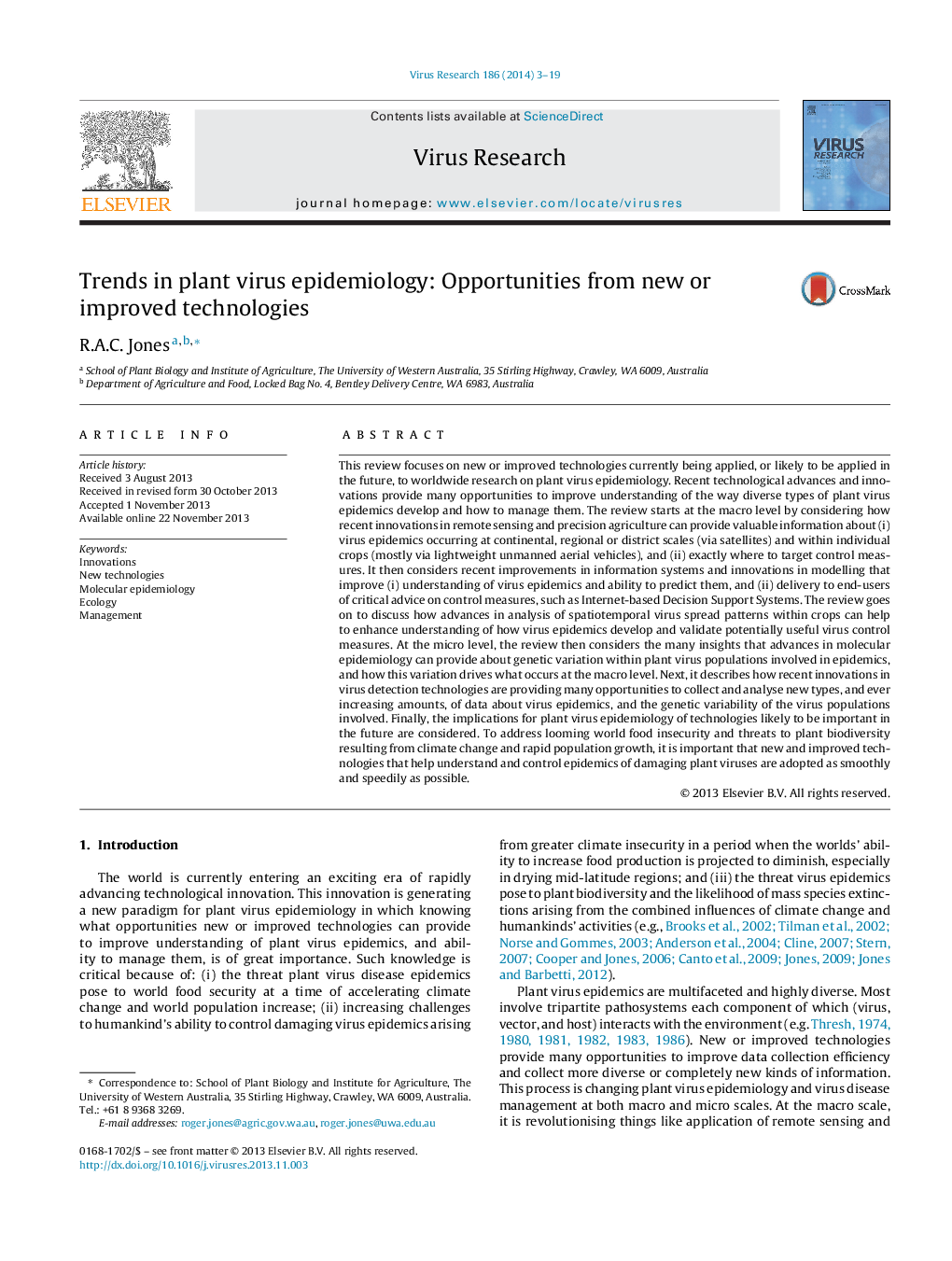| Article ID | Journal | Published Year | Pages | File Type |
|---|---|---|---|---|
| 6142425 | Virus Research | 2014 | 17 Pages |
â¢Rapidly advancing technological innovation is creating a new paradigm for plant virus epidemiology.â¢Many opportunities to enhance research on plant virus epidemics and their control are becoming available.â¢Research on plant virus epidemics is being transformed radically at both macro and micro levels.â¢Understanding of plant virus epidemics and how best to control them are advancing rapidly.â¢Harnessing new technologies to control plant virus epidemics is critical for future food security.
This review focuses on new or improved technologies currently being applied, or likely to be applied in the future, to worldwide research on plant virus epidemiology. Recent technological advances and innovations provide many opportunities to improve understanding of the way diverse types of plant virus epidemics develop and how to manage them. The review starts at the macro level by considering how recent innovations in remote sensing and precision agriculture can provide valuable information about (i) virus epidemics occurring at continental, regional or district scales (via satellites) and within individual crops (mostly via lightweight unmanned aerial vehicles), and (ii) exactly where to target control measures. It then considers recent improvements in information systems and innovations in modelling that improve (i) understanding of virus epidemics and ability to predict them, and (ii) delivery to end-users of critical advice on control measures, such as Internet-based Decision Support Systems. The review goes on to discuss how advances in analysis of spatiotemporal virus spread patterns within crops can help to enhance understanding of how virus epidemics develop and validate potentially useful virus control measures. At the micro level, the review then considers the many insights that advances in molecular epidemiology can provide about genetic variation within plant virus populations involved in epidemics, and how this variation drives what occurs at the macro level. Next, it describes how recent innovations in virus detection technologies are providing many opportunities to collect and analyse new types, and ever increasing amounts, of data about virus epidemics, and the genetic variability of the virus populations involved. Finally, the implications for plant virus epidemiology of technologies likely to be important in the future are considered. To address looming world food insecurity and threats to plant biodiversity resulting from climate change and rapid population growth, it is important that new and improved technologies that help understand and control epidemics of damaging plant viruses are adopted as smoothly and speedily as possible.
